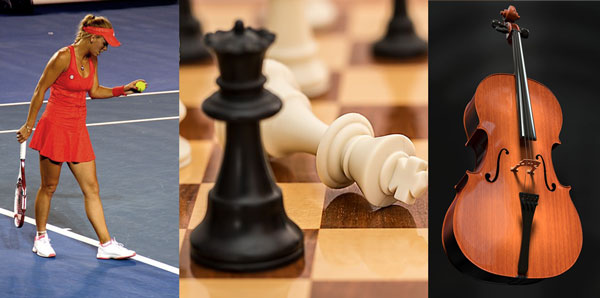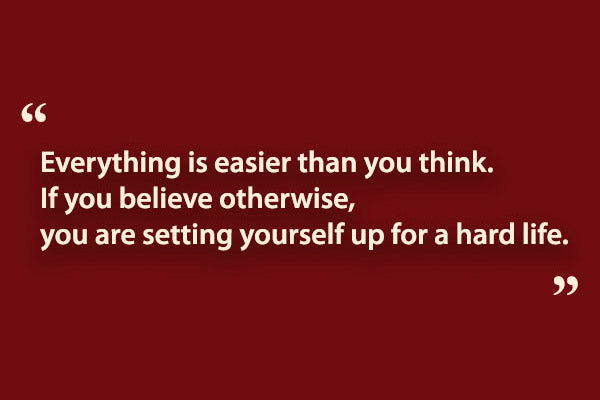Being a good trainer requires a set of skills. Like any other skill, you need to practice in order to get better at this skill. This is quite different from being good at the topic you are teaching. Unfortunately, many think that practice means conducting course after course and hopefully getting it right eventually. Sure enough, you may get a little bit better, but you won’t significantly improve your teaching skills unless you engage in what is known as “deliberate practice”. This term was popularised by the world-famous researcher on expertise, Anders Ericsson.
In the past couple of decades, numerous researchers have contributed to the concept of deliberate practice and the findings are quite interesting and educational, helping us to learn effectively and become an expert in anything.
A great book published in this area is called, “Talent is Overrated: What really separates world-class performers from everybody else” by Geoff Colvin. It has become a classic book in the field along with, “Outliers” by Malcolm Gladwell.
Colvin proposes three distinct models of deliberate practice. Each model is suitable for certain activities or skills. Sometimes mastering complex skills requires the use of all three models. They are quite useful in inspiring you to come up with new exercises or in identifying strategies to address weaknesses.
In this article, you will be introduced to these three models and will learn how to apply them to the training world.
The Music Model
Consider learning music. Classically, music is written down. You will need to learn how to read music and play it. To become great at it, you need to learn to play it well. This, you achieve by repetition against a specific standard. If the music you played doesn’t sound good enough, you need to simply practice it again until you get it right. Hence the term, music model.
Examples of skills that fall under the music model are presentation skills, public speaking, interview skills and the art of drawing. In each of these cases, you will have to analyse what is the best way forward based on a given situation and then practice how to deliver it. If you are interviewed, you probably have a core message to give. You then practice giving that message over and over again until you get it right.
The same applies to drawing. You have to learn how to copy exactly from nature such as in a life drawing, and as long as your drawing is different from what you see in nature, you have to go back and keep practicing until you can copy exactly from nature. Once you know how to depict nature correctly, you are then free to express yourself anyway you want artistically. For more information on this powerful technique see the Atelier Method.
The Chess Model
Consider the game of chess. To master the game, most players focus on studying positions and moves from real games played by grandmasters and top-level players. Huge number of books and resources exist. By going over move after move and situation after situation, players gain a mental database of moves which they can then refer to when the need arises. This is the chess model of deliberate practice.
In this model, to practice you study a particular position and choose the best move. You then compare your selection with the master’s move and if the two are different, you analyse why and figure out which is better. You are still in the realm of deliberate practice as you constantly compare your moves against an ideal and use repetition to improve your decision making.
A great example of a chess model is the case method in business training. You are given a problem and you need to present a solution. You can then compare your solution to that of the case’s protagonist and see how well you did. The key focus here is the process of addressing the issue since you cannot always know exactly what would have happened if you have implemented your specific solution.
The beauty of the chess method is that it helps you to focus on specific skills or weaknesses. You can study hundreds of cases in a given area aiming to become better at that specific area.
The Sports Model
Consider top athletes. They will need to go through two main categories of training. One set is focused on strength training. They need to train to develop muscles, run faster, stay in shape and generally gain the explosive power required to be better than any other athlete while competing.
In addition to strength training, they also need to focus on critical skills. These are skills specific to the sport they are engaged in. It could be hitting a tennis ball, hitting a golf ball or shooting an arrow.
For strength training, you need to focus on becoming powerful and agile. Applied to information and business-based skills, it means going back to studying and reviewing principles. It means staying up-to-date with the field and having the principles and theories fresh in mind so that you can refer to them quickly when needed. Examples of activities include reviewing classic text books, solving equations the old-fashioned way, and becoming aware of new theories and practices. Think of it much like doing repeated leg presses. It’s not supposed to be exciting or easy when you go through it; but you will feel stronger afterwards.
For critical skills, you need to focus on what you need to be good at and what weaknesses you need to eliminate. These can in turn be divided to two types. One type is repeatable, the other is not.
Repeatable skills are those that you can practice on your own until you get them right. Good examples include learning how to serve in tennis or practicing your golf in the driving range. For these, you simply fall back to the music model of learning. There is a set way to do it; you aim to match the ideal, you measure yourself or a coach gives you feedback on your performance and you simply go through countless repetitions to get it right.
For non-repeatable skills you need the sports model. These skills relate to activities that usually depend on what the other opponent does. A good example is dribbling in football. Each one is different, and each opponent does it differently. There is no set way to do this to make sure you win every time. Even if you master a winning formula you will need to change it randomly, otherwise your opponents can easily read what you are about to do and foil your plans. You cannot practice this on your own. You will need a partner or a coach to help you. The non-repeatable skills are similar to many situations in business; dynamic situations, unpredictable opponents and a fast-paced world.
To improve yourself on non-repeatable skills, pay careful attention to principles of deliberate practice; choose a specific aspect of the performance to improve, go through a high number of repeated practices and receive immediate feedback.
How to Apply the Three Models to Improve Your Training Skills
Now that you have become familiar with these three models, which model suits the training world? If you want to become better at training others, what style of deliberate practice should you do to get there?
To become an exceptional trainer, it turns out that all three models are required. Providing a training course is a complex activity and as such you will need to become better at several skills. Let’s see how each model helps.
Become a Better Trainer Using the Music Model
You can use the music model to practice public speaking, presentation skills and any areas where you benefit from practicing set recipes. Consider the following activities to train yourself:
- Look at videos of training sessions that are good. In the age of YouTube, there are plenty of these videos around. Look at good instructors, analyse what they do, then copy them.
- Identify core ideas. Analyse your training to identify the core ideas you want to teach. Next, focus on each objective and devise methods to achieve that objective. Work on each section repeatedly to master your delivery. Include logical arguments to convince, exercises to conduct, passionate delivery, humour and ways to express complex ideas in simple ways rather than the other way around as is usually done by sales people.
- Record a video of yourself while conducting training. Watch your video and analyse your performance. Define actions to improve your skills.
- Use a coach. Conduct a training course in front of a coach and ask for feedback. Use the feedback to improve your performance next time.
- Get measured specifically for a set of definite skills. Get measured on your training materials, pace, keeping delegates engaged, clarity, entertainment and retention of delegates on what they were taught. Next, focus on addressing low scores by devising exercises that help you get better at those skills.
- Obtain quality training materials. Using proven training materials, you can just focus on improving your performance in delivering it. If the training doesn’t work, you don’t want to have an excuse to blame it on the materials and lose an opportunity to improve yourself.
Become a Better Trainer Using the Chess Model
The chess model is about learning from the masters. Study their moves systematically and aim to replicate.
- Enrol in train the trainer courses. Learn about proven techniques from those who are experts in the field and have years of experience in running training courses. For example, you can consider our online train the trainer courses as well as instructor-led courses that you can attend.
- Watch good training videos and analyse a trainer’s performance. Go on YouTube and search for the specific field you are aiming to teach. See who the top players are. Go to their channels and watch their top performing videos. Ask yourself why should this person be followed? Why viewers like these videos? Why are these trainers effective? What are they doing differently to others? Focus on training skills as opposed to technical skills. Your aim here is to learn how they teach as opposed to how much they know about the field. Although, if that’s quite different from yours, you need to evaluate that too.
- Learn to handle specific situations by seeing how others address them. Suppose you have delegates challenging your expertise or asking tough questions. Think of a solution. Research it to see what great trainers do in this situation and for your specific field. Compare your solution idea with what the masters do and draw up actions.
- Think of a solution, then check a master trainer’s act. Suppose you want to teach the physics of torque. What’s the best way to start the course? Think how you would do it. Next, find videos of lecturers or trainers who are well-respected in the field and examine how they did it. Compare their performance with yours and draw up actions.
- Review databases of exercises and activities. A large part of training takes places through exercises. The more you know of these exercises the better. Think of this as reviewing many played chess games just as top chess players do.
- Open the training course with an impact. Suppose you want to start a training course and gain maximum impact. This means you want to gain the delegates attention, make them interested in the topic of training, make them commit to go through what you are about to teach them, and also make the event and the lessons more memorable. This is critical for long-term learning. This is a classic chess model. Have a look at how other masters start their courses much like studying “opening moves” in chess. You need to know many of these patterns and then choose the pattern that best suits your training needs.
Become a Better Trainer Using the Sports Model
The sports model is about strength training, specific skills development and learning to perform in a dynamic environment. Consider the following actions:
Strength Training
- Read classical text books on learning and development. Familiarise yourself with the latest findings, research and methodologies.
- Read train the trainer books to freshen up your mind on basic principles.
Critical Skills (Repeatable)
Remember that you can use the music model to train yourself on some of these. Here are some examples:
- Isolate skills and attack them systematically. For example, suppose you want to explain a topic efficiently in about ten minutes. Rehearse the presentation and time yourself. If it took you longer, review your content by focusing on the most important areas and see how you can get to the point quickly. Rehearse and repeat until you have covered core areas in the given time.
- Create efficient exercises. Most often, you need to teach with exercises to increase retention of content. Using a focus group, go through an exercise, devise a measure so you can examine their performance and measure the time it takes to complete it. Now, go back and rethink the exercise. Repeat until you have optimised the exercise’s effectiveness and minimised the time it takes to go through it.
Critical Skills (Non-repeatable)
A training environment is quite dynamic. Each course is different because the people attending the course are different. Hence, the sports model is quite applicable to the training world. To address, pick a well-defined aspect that you want to improve. Identify suitable exercises and go through a high number of them while making sure you receive immediate feedback. Here are examples:
- Energy management. If people are tired or distracted, they won’t learn. This however is subject to the state of your delegates. Each course is different. You must therefore have a series of strategies in mind and be able to deploy them should the need arise. Based on a situation, choose a strategy and see what results you get. Record your strategy and results. Reflect on it and draw up actions. Repeat to improve your performance.
Now, it’s your turn to do some homework. Consider the typical training courses you teach. Go through the three models explored in this article and draw up a series of strategies and exercises to improve your training performance. Aim to be the best trainer in the world in your field. Remember, you cannot always outsmart people; but you can always outwork them. Do your homework.
Soft Skills Training Materials
Get downloadable training materials
Online Train the Trainer Course:
Core Skills
Learn How to Become the Best Trainer in Your Field
All Tags
Training Resources for You

Course Design Strategy
Available as paperback and ebook

Free Training Resources
Download a free comprehensive training package including training guidelines, soft skills training activities, assessment forms and useful training resources that you can use to enhance your courses.

Our Comprehensive Guide to Body Language

Train the Trainer Resources
Get Insights - Read Guides and Books - Attend Courses
Training Materials
Get downloadable training materials on: Management Training, Personal Development, Interpersonal Development, Human Resources, and Sales & Marketing














Leave a comment
All comments are moderated before being published.
This site is protected by hCaptcha and the hCaptcha Privacy Policy and Terms of Service apply.